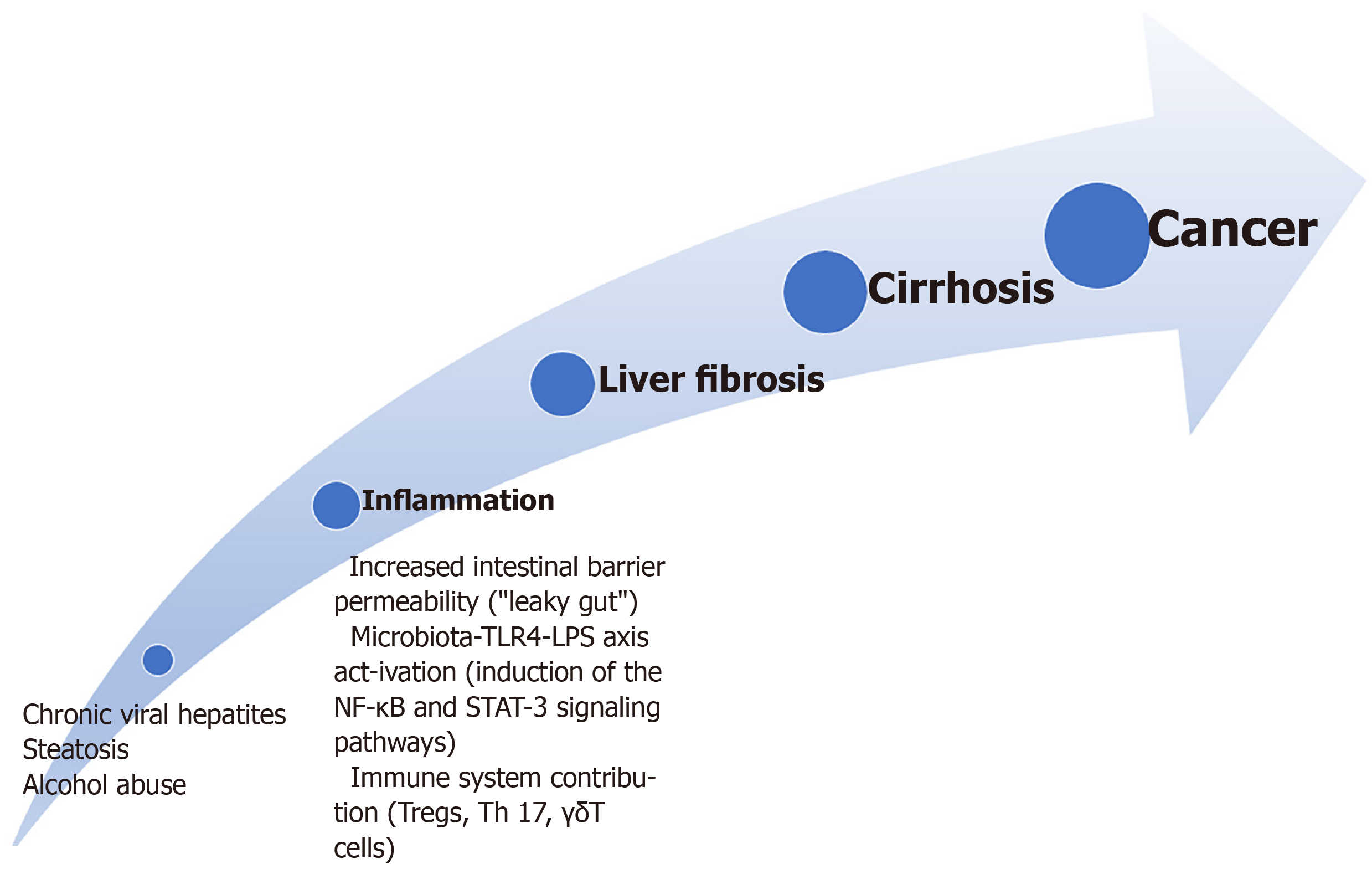Copyright
©The Author(s) 2021.
World J Gastrointest Oncol. Nov 15, 2021; 13(11): 1616-1631
Published online Nov 15, 2021. doi: 10.4251/wjgo.v13.i11.1616
Published online Nov 15, 2021. doi: 10.4251/wjgo.v13.i11.1616
Figure 1 The inflammation-liver fibrosis-cirrhosis-cancer pathway.
Dysbiosis, alcohol abuse and high-fat diet cause the alteration of the intestinal barrier permeability. With increased gut permeability, both microbiota and toxins (e.g., endotoxins or flagellin) may reach the liver through the portal vein stimulating an inflammatory reaction. The toll-like receptor (TLR) 4 is expressed in the Kupffer, hepatic stellate, endothelial cells and hepatocytes. TLR4 activation causes the upregulation of the epidermal growth factor epiregulin that shows a mitogenic effect on hepatocytes causing hepatocellular carcinoma promotion. The lipopolysaccharide, a component of the gram-negative bacteria wall, binds to the transmembrane TLR4 causing the expression of the hepcidin showing an anti-apoptotic effect on the hepatocytes via the activation of the nuclear factor-κB and signal transducer and activator of transcription 3 signalling and the production of interleukin (IL)-17, IL-6, IL-1β, and tumour necrosis factor-α. Regulatory T cells can suppress the host antitumor immunity and cause tumour progression worsening CD8+ T cells function. T helper 17 cells showed pro-inflammatory effects through the secretion of IL-17A and IL-22 while γδT cells show pleiotropic activities. TLR: Toll-like receptor; LPS: lipopolysaccharide; NF: nuclear factor; Tregs: Regulatory T cells; Th: T helper; STAT-3: Signal transducer and activator of transcription 3.
- Citation: Bartolini I, Risaliti M, Tucci R, Muiesan P, Ringressi MN, Taddei A, Amedei A. Gut microbiota and immune system in liver cancer: Promising therapeutic implication from development to treatment. World J Gastrointest Oncol 2021; 13(11): 1616-1631
- URL: https://www.wjgnet.com/1948-5204/full/v13/i11/1616.htm
- DOI: https://dx.doi.org/10.4251/wjgo.v13.i11.1616









